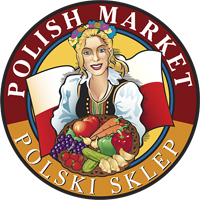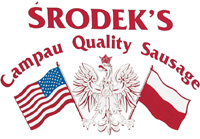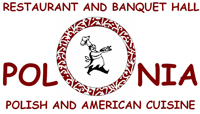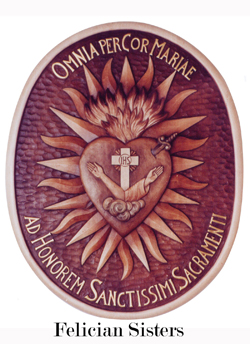|
Foods of Poland
Polish cuisine is a mixture of Slavic and foreign culinary traditions. Born as a mixture of various culinary traditions, both of various regions of Poland and surrounding cultures, it uses a large variety of ingredients. It is rich in meat of all kinds and with spices, as well as in different kinds of noodles and dumplings, the most notable of which are the pierogi. It is related to other Slavic cuisines in usage of kasza and other cereals, but was also under the heavy influence of Turkic, Germanic, Hungarian, Jewish, French or colonial cuisines of the past. Generally speaking, Polish cuisine is rich, substantial and relatively high in fat. Poles allow themselves a generous amount of time in order to enjoy their meals.
A typical lunch is usually composed of at least three courses, starting with a soup, such as barszcz (beet) or zurek (sour rye meal mash), followed perhaps in a restaurant by an appetizer of salmon or herring (prepared in either cream, oil or vinegar). Other popular appetizers are various meats, vegetables or fish in aspic. The main course may be the national dish, bigos (sauerkraut with pieces of meat and sausage) or kotlet schabowy (breaded pork cutlet). Meals often finish with a dessert such as ice cream, makowiec (home-made poppy seed cake), or drozdzówka, a type of yeast cake. Other Polish specialties include chlodnik (a chilled beet or fruit soup for hot days), golonka (pork knuckles cooked with vegetables), kolduny (meat dumplings), zrazy (slices of beef), salceson and flaczki (tripe). Many dishes contain quark (cheese). Pork is the main meat in the cuisine of Poland.
History of Polish Food
Middle Ages
During the Late Middle Ages, the cuisine of Poland was very heavy and spicy. Two main ingredients were meat (both game and beef) and cereal. As the territory of Poland was densely forested, use of mushrooms, forest fruits, nuts and honey was also widespread. Thanks to close trade relations with the East, the price of spices (such as juniper, pepper and nutmeg) was much lower than in the rest of Europe, and spicy sauces became popular. One purpose was to neutralize the odour of imperfectly-preserved meat[1]. The usage of two basic sauces (the jucha czerwona and jucha szara, or red and white blood in contemporary Polish) remained widespread at least until 18th century[1].
The most popular beverages were beer, including the very lightly-fermented barley-water, podpiwek, and mead -- however in the 16th century the upper classes started importing Hungarian and Silesian wines. After distilled spirits became common in Europe, vodka became popular, especially among the lower classes.
Renaissance
With the ascension of queen Bona Sforza, the 2nd wife of Sigismund I of Poland, in 1518, countless cooks were brought to Poland from Italy and France. Although native vegetable foods were an ancient and intrinsic part of the cuisine, this began a period in which vegetables such as lettuce, leek, celeriac and cabbage were more widely used. Even today, such vegetables as leeks, carrots and celery are known in Polish as wloszczyzna, which refers to Wlochy, the Polish name of Italy.
The Republic
Until the Partitions, Poland was one of the largest countries in the world, encompassing many regions with their own, distinctive culinary traditions. Among the most influential in that period were Lithuanian, Turkish and Hungarian cuisine. With the subsequent decline of Poland, and the grain production crisis that followed The Deluge, potatoes began to replace the traditional use of cereal. Also, because of numerous wars with the Ottoman Empire, coffee became popular.
Partitions
Under the partitions, the cuisine of Poland became heavily influenced by cuisines of the surrounding empires. This included Russian and German cuisines, but also the culinary traditions of most nations of the Austro-Hungarian empire. In the Russian-occupied part of the country, tea displaced the then-popular coffee. Under German influence the tradition of making white sausages was adopted in Greater Poland. Perhaps the most influential was the culinary tradition of multi-national empire of Austria-Hungary, which led to development of a Central European cuisine in Galicia.
The 19th Century also saw the creation of the first Polish cookbook, by Lucyna Cwierczakiewiczowa, who based her work on the 18th Century diaries of the szlachta.
After World War II
After the end of World War II, Poland fell under Communist occupation. restaurants were at first nationalized and then mostly closed down by the authorities. Instead, the communists envisioned a net of lunch rooms for the workers at various companies, and milk bars. The very few restaurants that survived the 1940's and 1950's were state-owned and were mostly unavailable to common people due to high prices. The lunch rooms promoted mostly inexpensive meals, including in soups of all kinds. A typical second course consisted of some sort of a ground meat cutlet served with potatoes. The kotlet schabowy is similar to the Austrian Wiener schnitzel.
With time, the shortage economy led to chronic shortages of meat, eggs, coffee, tea and other basic ingredients of daily use. This situation led in turn to gradual replacement of traditional Polish cuisine with food prepared of anything that was available at the moment. Among the popular dishes introduced by the public restaurants was an egg cutlet, a sort of a hamburger made of minced or instant egg and flour. The traditional recipes were mostly preserved during the Wigilia feast, for which most families tried to prepare 12 traditional courses.
Modern Times
With the end of communism in Poland in 1989, restaurants started to be opened once again and basic foodstuffs were once again easily obtainable. This led to a gradual return of traditional Polish cuisine, both in everyday life and in restaurants. In addition, restaurants and supermarkets promote the usage of ingredients typical to other cuisines of the world. Among the most notable of ingredients that started to be commonly used in Poland were cucurbit, zucchini and all kinds of fish. During communist times, these were available mostly in the seaside regions.
Famous Country-Wide Dishes
Soup
• Barszcz - beet root soup, ubiquitous among Slavic nations
• Chlodnik - cold soup made of soured milk, young beet leaves, beets, cucumbers and chopped fresh dill
• Czernina - duck blood soup
• Flaki or flaczki - beef or pork tripe stew with marjoram
• Rosól - clear chicken soup
• Zupa grzybowa - mushroom soup made of various species of mushroom
• Zupa ogórkowa - soup of sour, salted cucumbers, often with pork ("dill pickle soup")
• Zupa szczawiowa - Sorrel soup
• Zur - soured rye flour soup with white sausage and/or hard-boiled egg
• Zurek - same as above but with the addition of potatoes. Depending on the part of Poland it came from it may contain mushrooms as well. This dish is also called staro wiejski ("old village"). Zurek is frequently served with sour cream or by itself.
Main Course
• Pierogi - dumplings, usually filled with sauerkraut and/or mushrooms, meat, potato and/or savory cheese, sweet curd cheese with a touch of vanilla, or blueberries or other fruits -- optionally topped with sour cream, and sugar for the sweet versions
• Bigos - a stew of sauerkraut and meat, similar to the French choucroute, but generally less acidic and including unfermented white cabbage. Wild game is plentiful in Poland. Much of it ends up in Poland's national dish - bigos, the appropriately named hunter's stew. A typical stew might contain 5-6 different kinds of meat.
• Kotlet schabowy - a pork chop, similar to the Austrian Wiener Schnitzel but usually thicker
• Kasza gryczna ze skwarkami - buckwheat cereal with chopped, fried lard and onions
• Kaczka z jablkami - roast duck with apples
• Sztuka miesa - a meat dish similar to the French ragout
• Golonka - stewed pork knuckle or hock
• Gulasz - Goulash
• Golabki - Golumpki, white cabbage leaves stuffed with spiced minced meat and rice or with mushrooms and rice served with sour cream or tomato sauce
• Placki kartoflane/ziemniaczane - potato pancakes usually served with sour cream
• Pyzy - potato dumplings served by themselves or stuffed with minced meat or cottage cheese
• Nalesniki - crepes which are either folded in to triangles or rolled in to a tube typical servings incloude sweet white cheese with sugar and sour cream, various fruits topped with bita piana (whipped cream) or with bite bialka (whipped egg whites)
• Kluski z kapusta Polski - noodles and cabbage
• Kielbasa - More than 90 kinds of sausage are made in Poland
• Golden chanterelles, brown-capped boletus, and honeycombed morels Harvested from local forests are mushrooms - They are picked during the long season that extends into late autumn. Most Poles learn as a child how to distinguish between different varieties of mushrooms.
• Babka - The national specialty of Poland. Babka is made of rich yeast dough enhanced with raisins, and flavored with grated lemon and orange rind. Polish families guard their babka recipes like jewels, passing them on as heirlooms from one generation to the next. Babka means grandmother in polish, and my grandmother always told me that a housewife's reputation as a cook rests on the successful rising of her babka. The dough must be kneaded by hand for at least 40 minutes before it is left to rise.
• Cwikla - Traditional Easter relish of beets and horseradish.
Dessert
• Kutia - a small square pasta with wheat, poppy seeds, nuts, raisins and honey. Typically served during Christmas.
• Makowiec - poppyseed-swirl cake.
• Chalka - sweet white wheat bread of Jewish origin.
• paczek - closed donut filled with rose marmalade and other fruit conserves.
• Krówki - soft milk toffee candies.
• Kisiel - clear, jelly-like fruit liquid.
• Budyn - flavoured custard.
• Pierniki - soft gingerbread shapes filled with marmalade of different fruit flavours and covered with chocolate.
• Sernik - Sernik (cheesecake) is one of the most popular desserts in Poland. It is a cake made primarily of twaróg, a type of fresh cheese (also known as Quark).
Folk medicine
• Syrop z Cebuli- a cough remedy made of chopped onion and sugar; although it is very tasty, it is still considered a medicine.
Ingredients
• Kapusta kiszona - sauerkraut
• Ogórek kiszony - salted sour cucumber, a pickle prepared in a similar way to sauerkraut
• Kielbasa - Polish sausage, comes in a wide variety of versions
• Smietana - a type of sour cream
Beverages
• Miód pitny - mead
• Podpiwek - very lightly alcoholic beer made of crumbled dark bread
• Wino proste - a variety of alcoholic beverages made of fruit extracts and spirit, countless types and names of which exist
• Kompot - a non-alcoholic beverage made of boiled fruit, optionally also with sugar and spices (e.g. clove or cinnamon). Served hot or cold. Can be made of one type of fruit or a mixture, including but not limited to apples, peaches, pears, strawberries, sour cherries and gooseberries. A special type of kompot is made of dried fruit.
• Wódka - (Vodka) Poland produces and exports many premium vodkas, among them you will find brands such as Chopin vodka, Belvedere (vodka), Luksusowa, Wyborowa, Zubrówka and many more. Pablo Picasso once said "The three most astonishing things in the past half-century were the blues, cubism, and Polish vodka."
Regional Cuisine
Galicja
• Strudel jablkowy - apple cake, identical to Austrian apfelstrudel
• Piszyngier - cake made of layers of wafer and layers of cream or filling; in the Swietokrzyskie area its name is kajmak and it's usually covered with chocolate
Eastern Poland
Kresy
• Babka zóltkowa - yolk and yeast cake
• Cepeliny - big long-shaped potato dumplings stuffed with meat and marjoram
• Chlodnik - cold soup made of soured milk, young beet leaves, beets, cucumbers and chopped fresh dill
• Grzyby po zmudzku - mushrooms Samogitian style
• Kawior z baklazana - "caviar" of egg-plant
• Kutia - traditional Christmas dish, made of wheat, poppy seeds, nuts, raisins and honey
• Ruskie pierogi - pierogies with quark and potato
• Tort ziemniaczany - potato cake
Podlasie
• Kartacze - big long-shaped potato dumplings stuffed with meat and marjoram
• Kiszka ziemniaczana - potato sausage
• Okon smazony, w zalewie octowej - perch fried in vinegar
• Sekacz - pyramid cake, made of many layers.
Northern Poland
• Szpekucha - small dumplings stuffed with lard and fried onion
Masovia (including Warsaw)
• Baba warszawska - yeast cake
• Bulka z pieczarkami - a bun filled with a field mushroom stew
• Flaczki z pulpetami (po warszawsku) - tripe stew with marjoram and small meat noodles
• Kawior po zydowsku - "Jewish caviar" - chopped calf or poultry liver with garlic
• Paczki - doughnuts with rose marmalade
• Pyzy z miesem - round potato dumplings stuffed with meat
• Zrazy wolowe - beef chops in sauce
• Zrazy wolowe zawijane - chopped dill cucumbers and onions wrapped in thin strips of beef
• Zupa grzybowa po kurpiowsku (z gasek) - mushroom soup made of Tricholoma equestre, a poisonous, large mushroom with a cereal-like flavor.
Masuria
• Sekacz - pyramid cake, made of many layers.
Pomerania
• Pierniki - soft gingerbread shapes filled with marmalade of different fruit flavors and covered with chocolate.
Silesia
• Kluski slaskie (kluski is popular Polish name of pasta, "slaskie" means "Silesian (adjective)") - round shaped potato dumplings served with gravy, made of mashed potatoes, an egg and potato flour
• Krupniok - kind of sausage made of kasha and animal blood
• Makielki or moczka or makówki - traditional Wigilia dessert, its main ingredients are: gingerbread extract, nuts and dried fruit, strawberry compote and almonds.
• Rolada z modra kapusta - stuffed meat roll with red cabbage, traditionally eaten with kluski slaskie
• Siemieniotka - soup made of cannabis, one of main Christmas Eve meals
• Wodzionka or broltzupa (ger. brot - bread, pol. zupa - soup) - soup with garlic and potatoes
Tatra Mountains
• Kwasnica - meat and sauerkraut stew
• Sliwowica lacka - strong (70% of alcohol) plum brandy
• Oscypek - hard, salty cheese from non-pasteurized sheep milk
Greater Poland
• Gzik (gzika) - cottage cheese with onion and/or chives
• Pyry z gzikiem - boiled, unpeeled potatoes with gzik and butter
• Rogale swietomarcinskie - croissants filled with poppy seeds, almonds, other nuts and raisins, traditionally eaten on November the 11th, St. Martin's day
• Plendze - potato pancakes served with sugar
|







